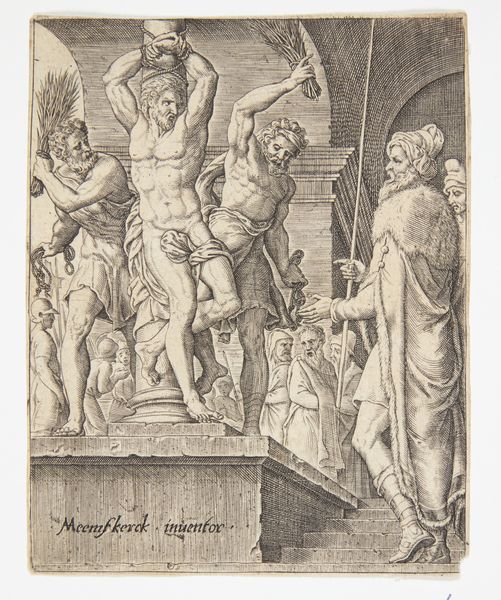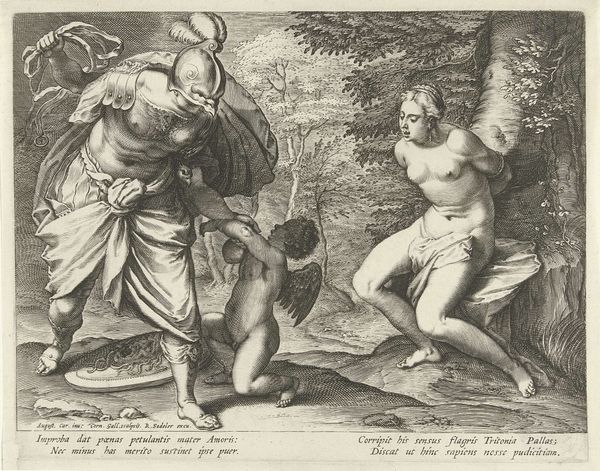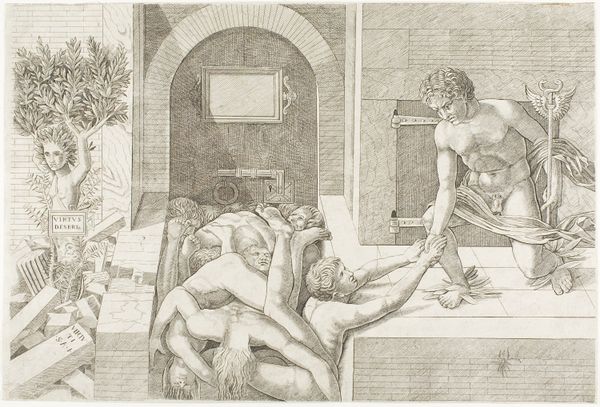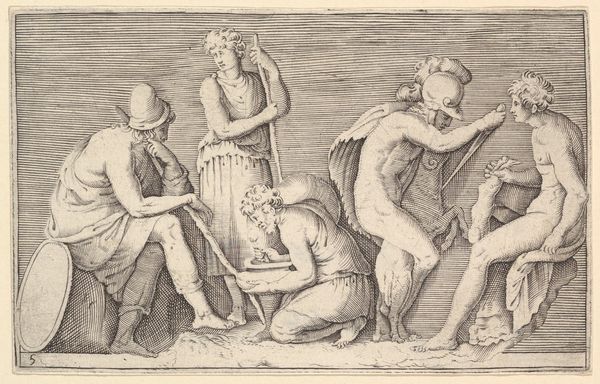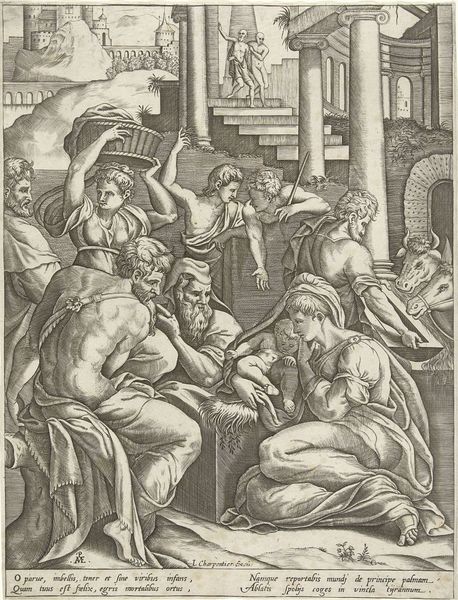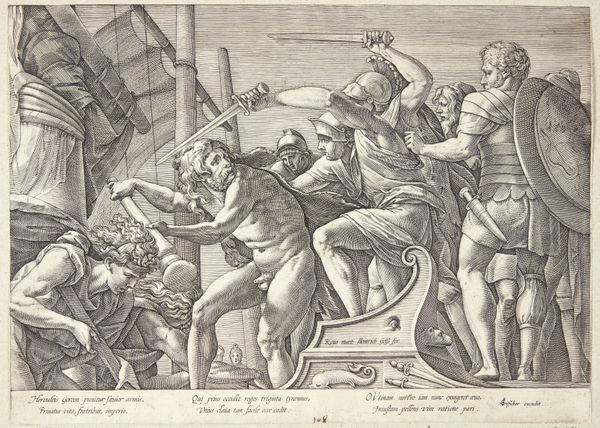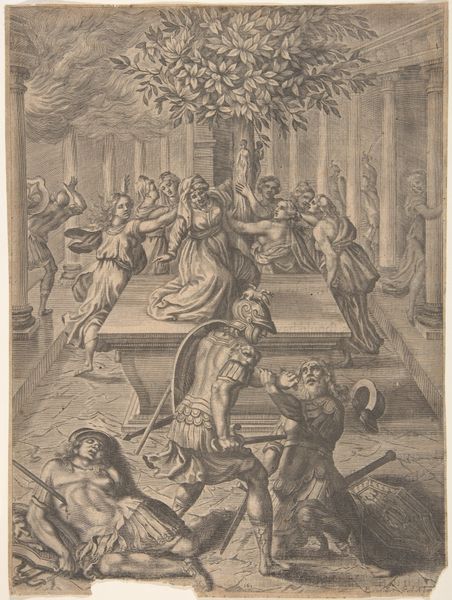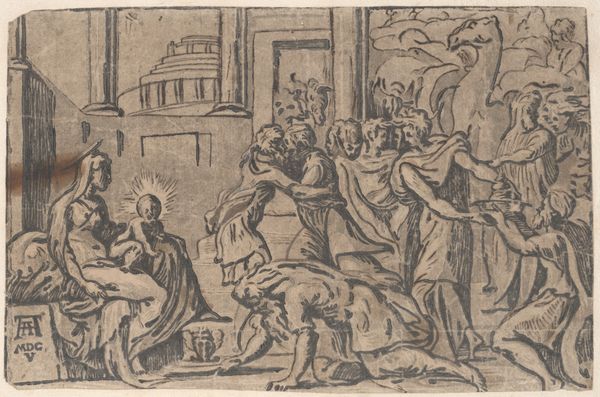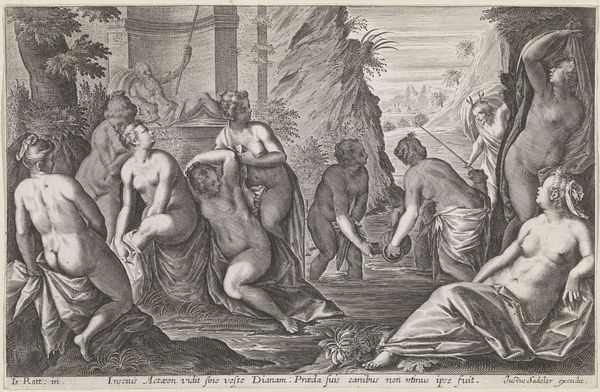
print, engraving
#
allegory
# print
#
old engraving style
#
figuration
#
history-painting
#
northern-renaissance
#
nude
#
engraving
Dimensions: height 208 mm, width 275 mm
Copyright: Rijks Museum: Open Domain
Curator: Pieter van der Heyden created this engraving, "Susanna and the Elders," in 1556. It currently resides at the Rijksmuseum. What's your initial impression? Editor: The composition feels immediately unbalanced. The sharp contrast of dark lines against the pale figures creates a dramatic, almost claustrophobic scene. You sense Susanna's terror just from the arrangement. Curator: As an engraving, it represents a particular mode of artistic production. The precision and repetition involved in creating such a work speak to the era's burgeoning print culture, where images became more widely accessible, spreading narratives and morals in ways previously unimaginable. It begs the question of how access shaped this specific narrative about voyeurism and power. Editor: Indeed. The very subject matter – Susanna being spied upon – becomes even more potent when disseminated via print, accessible to a broader audience. Water imagery is used repeatedly in the artwork and it carries its cultural weight through art history and symbolism to connect purification, danger, and revelation with the element. Look at the women flanking the fountain, rendered almost as statuary themselves, echoing Susanna's vulnerability but with an eerie, statuesque composure. Curator: Consider also the labour invested: each line painstakingly etched to reproduce not just an image, but also ideas about justice and female virtue for the consuming public. What does that production context say about these elders, caught between moral authority, judgment and exploitation? Their inclusion in a mass-produced image creates an object lesson on desire, law and the labor inherent in both its enforcement and representation. Editor: Exactly. The foliage curling in decorative tendrils around the scene almost imprisons Susanna in this fateful moment, highlighting her loss of privacy, mirroring the social constraints placed upon her by societal and religious powers. Susanna becomes not just an individual but a symbol representing enduring struggles over truth and justice, reflected and reinforced across artistic depictions of the era. Curator: In essence, "Susanna and the Elders" isn't merely an illustration but a multifaceted product of its time—reflective of anxieties surrounding piety and vice, crafted through meticulous labor, and made accessible by new printing technologies that further influenced culture. Editor: Ultimately, examining these elements deepens our understanding of this era—Susanna isn't just caught, she is embedded in material, meaning, and moral argument, frozen, observed and, even now, reinterpreted, endlessly.
Comments
No comments
Be the first to comment and join the conversation on the ultimate creative platform.


